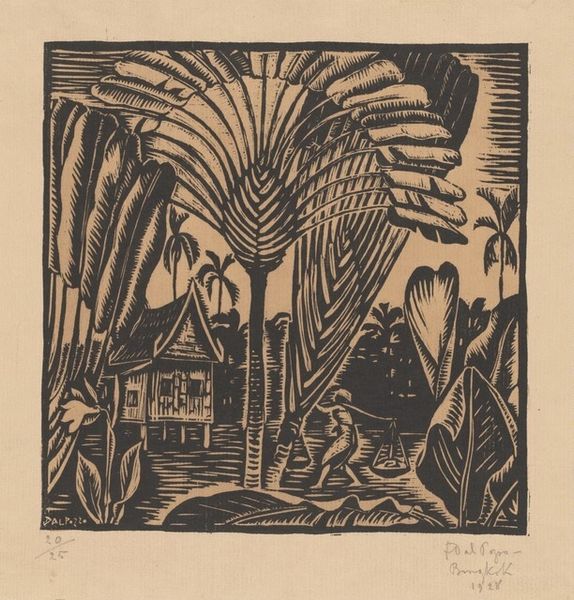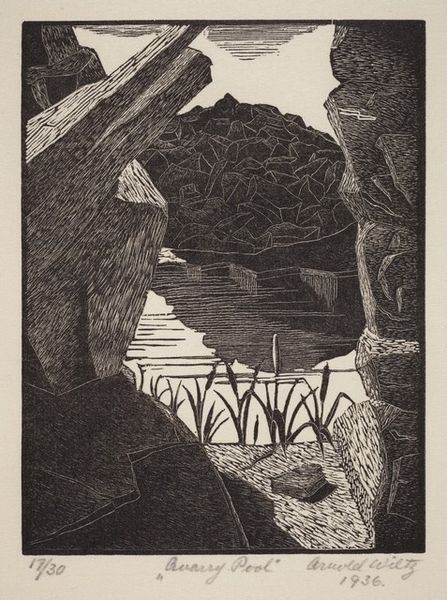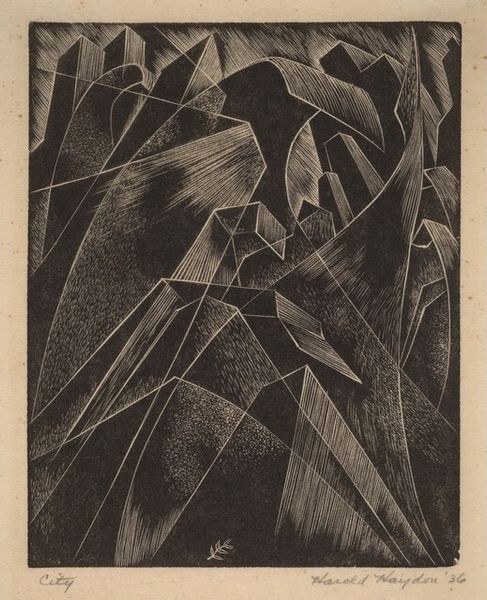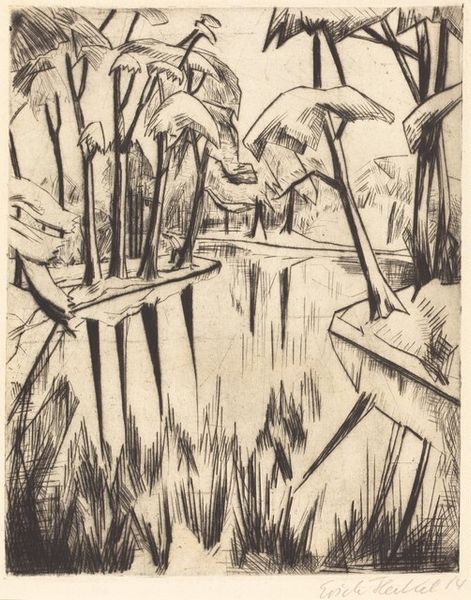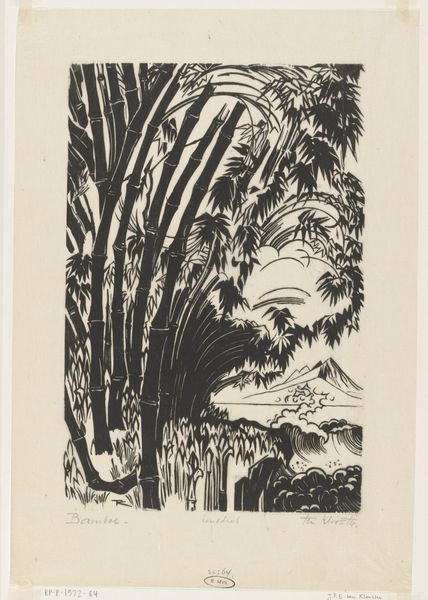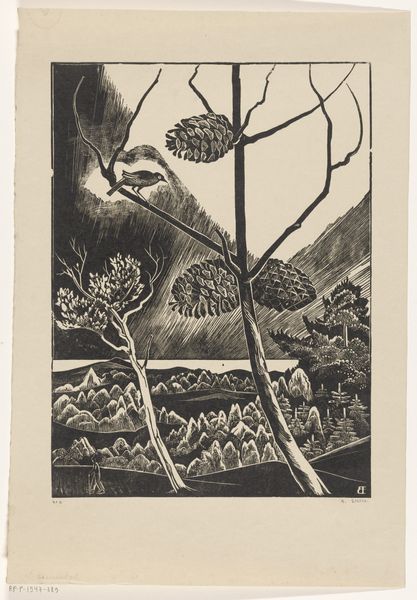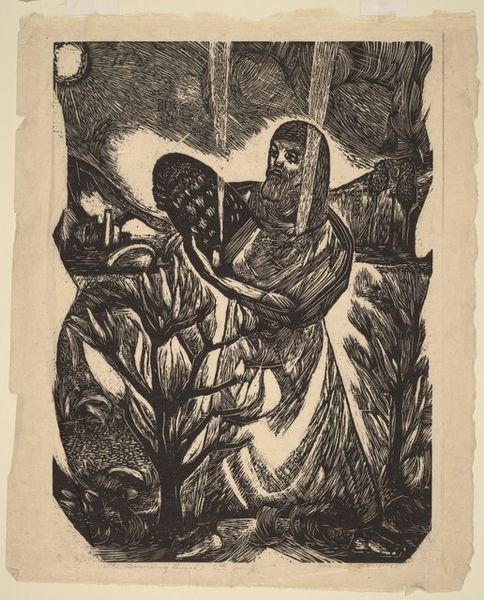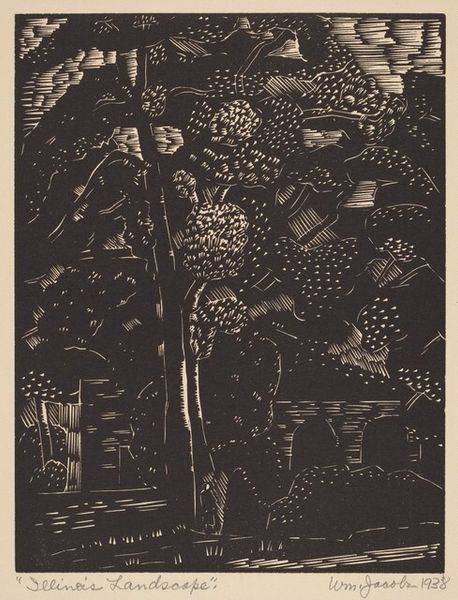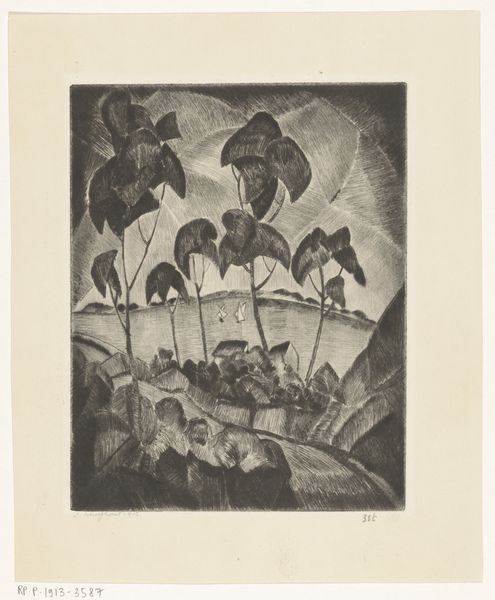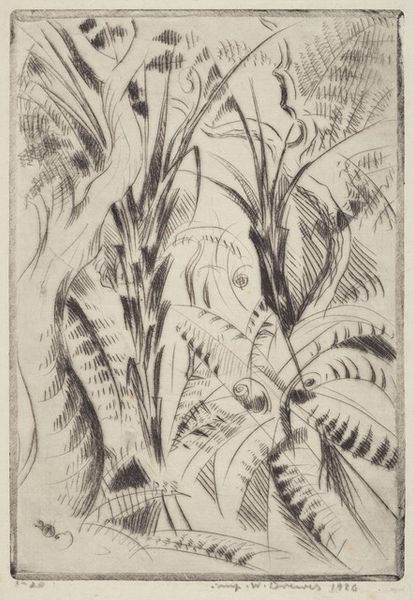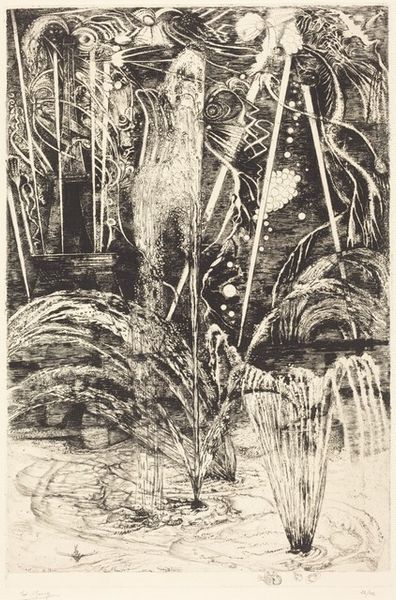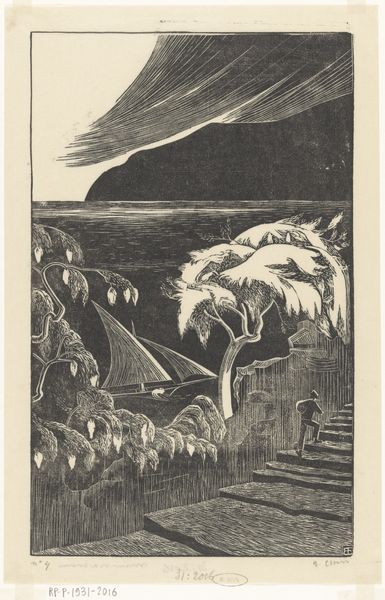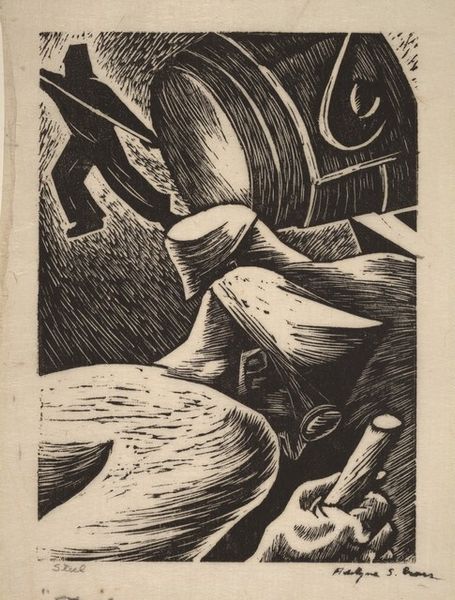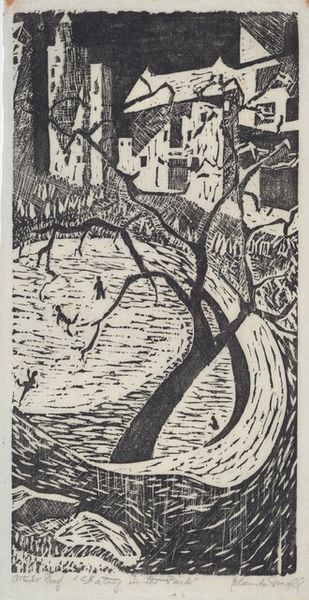
print, woodcut
#
narrative-art
# print
#
landscape
#
figuration
#
woodcut
#
nude
Dimensions: Image: 213 x 158 mm Sheet: 258 x 200 mm
Copyright: National Gallery of Art: CC0 1.0
Curator: Let’s discuss this powerful woodcut titled "Massacre River, Haiti" by Richard A. Loederer. Editor: It immediately strikes me with its stark contrasts and a dramatic, almost biblical, quality of light bathing a secluded lagoon. Curator: Precisely. Loederer's technique is very evocative, creating mood through carefully chosen detail, line work, and shadow. It's essential to examine the historical weight attached to this river. Its name bears witness to the mass slaughter that occurred there during the Haitian-Dominican conflict. The river served as border, but became better known for horrific events. Editor: That context is incredibly important. Without it, one might misinterpret the solitary nude figure in the water. The setting, at first glance, suggests a sort of idyllic, if somewhat theatrical, tropical paradise. Yet, your description gives an additional, extremely crucial context, shifting it into a meditation on memory, violence, and perhaps even resilience in the face of atrocity. Curator: The deliberate lack of explicit depiction of violence in the scene invites viewers to consider the lasting impact of such events and their relationship to the landscape. I wonder what it means for him to focus his composition so dramatically on a figure existing harmoniously with that space—a body that's neither victim nor perpetrator. This reminds me how the public consumption of such traumatic imagery tends to veer between outright denial of the past or graphic violence with little in-between. Editor: Absolutely, Richard A. Loederer does make it clear this location is not pristine wilderness through the composition's name, but the scene does avoid exploitative and re-traumatizing depictions of suffering that were already pervasive in mass media. It’s difficult to ignore how many conversations are raised here by what is left unseen. Curator: Exactly. Loederer's artistic restraint serves as a powerful method, allowing viewers to project, reflect, and reconcile with a landscape charged with historical pain. This isn't merely a scene of tropical beauty; it’s an open space in need of continuous consideration, contemplation, and even protest. Editor: A nuanced and poignant statement indeed. Thank you for offering a deeper look.
Comments
No comments
Be the first to comment and join the conversation on the ultimate creative platform.
